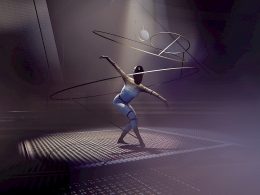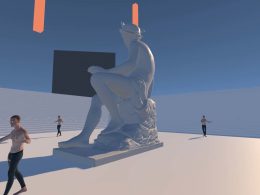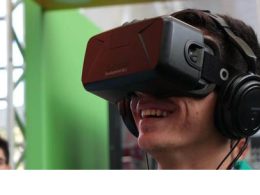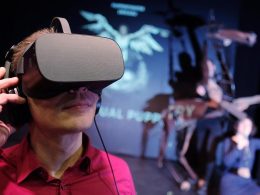Art and culture are becoming increasingly digital. The Vorarlberg author and director Thomas Welte is currently working on a hybrid digital format in which the audience sees animated worlds with VR glasses.
"Streaming is not the right way to present theatre," says Vorarlberg author and director Thomas Welte. "It's just a stopgap solution. I never really liked it. The live experience is missing," he says. With "Poligonale", he wants to bring a hybrid digital format to the stage this year that combines both worlds. And goes one better: The audience sitting in the theatre will see the actors live in a virtual reality world.
Virtual worlds
He is currently working with his troupe on a short play for two actors in motion capture suits. All of their movements are digitally recorded and transferred to a virtual world that visitors equipped with VR glasses can see. When they take off the goggles, they see the actors on stage moving objects or interacting. The sound comes live from the theatre.
Welte builds the virtual environment with a game engine, which is intended to create numerous virtual stage sets at the touch of a button.
Pandemic accelerated development
His poligonal is a technically extremely complicated endeavour that is also quite expensive. He benefits from the fact that he can implement as much as possible himself. "I've been working on making it work for about a year." He already had the idea for the format before the pandemic, but this accelerated its implementation. Thanks to numerous existing open source templates, he was able to build a motion capture suit himself and the audience in the auditorium is provided with the VR sets.
However, theatre-goers can also join in at home if they have such glasses.
Welte is not necessarily thinking of traditional theatre audiences, but also of young gamers who otherwise have little to do with the medium of theatre but have the technical equipment. "That's the thing where I think we can make it easier for less theatre-interested audiences to get involved," he says optimistically.
A mixture of theatre and film
"I'm not sure I want to call it theatre," he struggles for a definition. "It's a mixture of theatre and film. It's a live film. What I can't do in the theatre, I can do here: create an infinite number of worlds. I can fly around if I want to." Nevertheless, it is very different from making a film for which you have several months. D
However, the problem with theatre - especially with small productions - is always staging a play with 20 characters with five actors. "You don't have that problem with VR, because you can change everything at the touch of a button. I don't have to limit myself." For him as a director, however, this means hard work every evening, as the processes cannot be automated. "You sit at the computer and manage everything with the cameras, just like a live sports broadcast." The premiere is scheduled for autumn. The play will also be quite short at around 30 minutes. "If you're not used to these headsets, it's not easy at first. But we're doing it to show that it's possible."
Source: Voralberg









